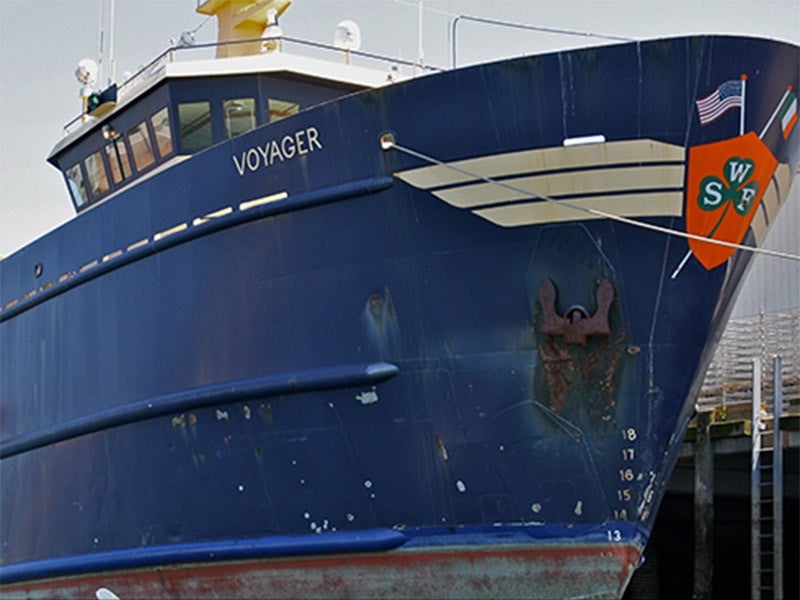Atlantic Forage Fish Need Oversight of Industrial Trawl Fleet
Scientists and fishermen agree that the industrial midwater trawl fleet is taking a toll on many species on the Atlantic Coast. Unfortunately, an important action to rein in this damage is facing a substantial delay.

This page was published 11 years ago. Find the latest on Earthjustice’s work.
Scientists and fishermen agree that the industrial midwater trawl fleet is taking a toll on many species on the Atlantic Coast. The massive nets of these vessels kill millions of river herring and, increasingly, the juveniles of some commercially important groundfish such as haddock. Unfortunately, an important action to rein in this damage is facing a substantial delay.
In the summer of 2012, after considering comments from tens of thousands of Americans, both the New England and the Mid-Atlantic Fishery Management Councils took dramatic votes calling for NOAA Fisheries to increase oversight of these industrial trawlers in order to increase protection of river herring, shad, Atlantic herring and mackerel, and juvenile groundfish. Atlantic (sea) herring, river herring and mackerel are the glue of the East Coast ocean food web, while juvenile haddock represent hope for the future of New England’s commercial groundfish fishery, recently declared a disaster by the Secretary of Commerce after years of overfishing and habitat destruction.
The unintended catch of river herring was one of the significant factors leading regulators to consider listing river herring as a threatened species under the Endangered Species Act. This at-sea bycatch undermines other efforts to restore river herring, an issue explored in this feature on the PBS program, “This American Land.”
The industrial fleet claims they are not to blame for the crashing populations of non-target fish. At meetings in 2012, the industry even boasted that they welcomed monitoring of their industry to prove their innocence. The vote approving the new fishery reforms looked like a win-win for everyone.
Ocean conservation groups, family fishers and other members of the public cheered the councils for working hard to implement catch caps for river herring and shad in the Atlantic herring and mackerel fisheries. With caps and monitors, these essential forage species stood a good chance of recovery, helping to restore the ecosystem and bring hope for a healthy fishery in the future. But without significant observer coverage, we won’t have the information needed to make the caps achieve their goals.
Sadly, behind the scenes, the industry worked against approval of the monitoring reforms, and the federal agency in charge, NOAA Fisheries, rejected a requirement for vessels to carry observers on every fishing trip, promising instead to initiate another plan (the “Omnibus Observer Coverage Amendment”) to allow for industry funding of the cost of observers. The initial timeline for this amendment promised completion in time for the start of the 2015 fishing year.
Recently, however, NOAA announced this plan would face yet another delay. Now it seems unlikely 100 percent observer coverage will become a reality in the Northeast until fishing year 2016 or beyond.
Meanwhile, populations of many important forage fish species continue to decline.
It is time for NOAA Fisheries and the councils to prioritize and complete the work needed to implement the Omnibus Observer Coverage Amendment.
Take Action: Tell federal fishery managers it’s time for public oversight of industrial fishing vessels by requiring an independent observer on every midwater trawl trip.
Earthjustice’s Oceans Program uses the power of the law to safeguard imperiled marine life, reform fisheries management, stop the expansion of offshore oil and gas drilling, and increase the resiliency of ocean ecosystems to climate change.